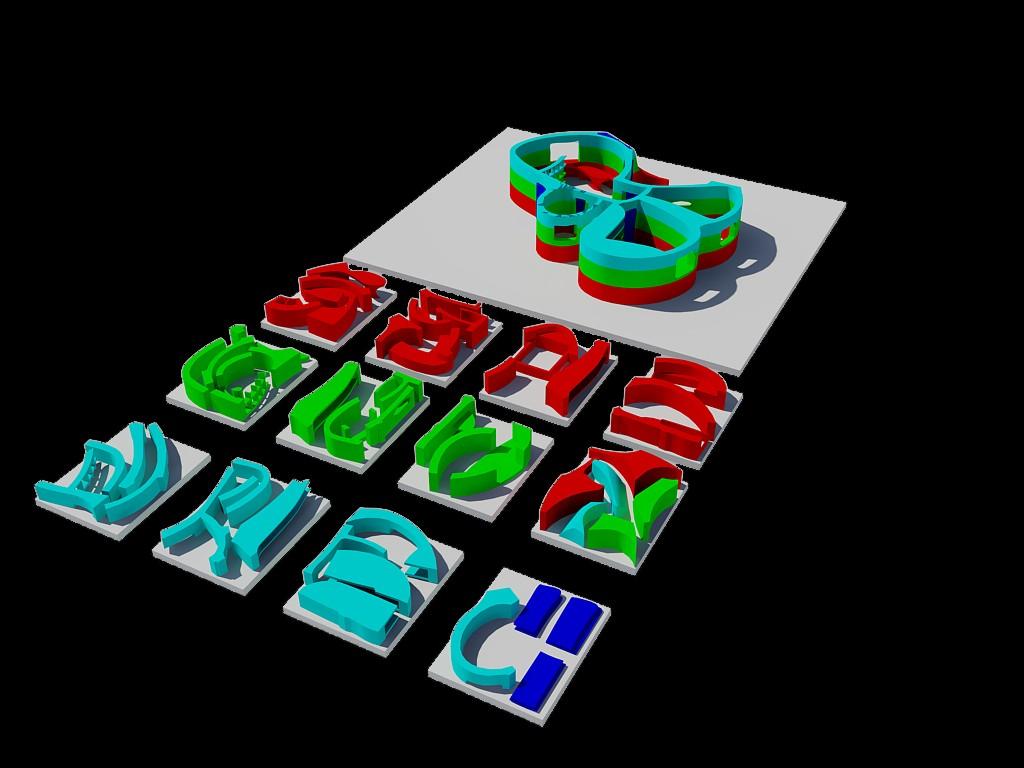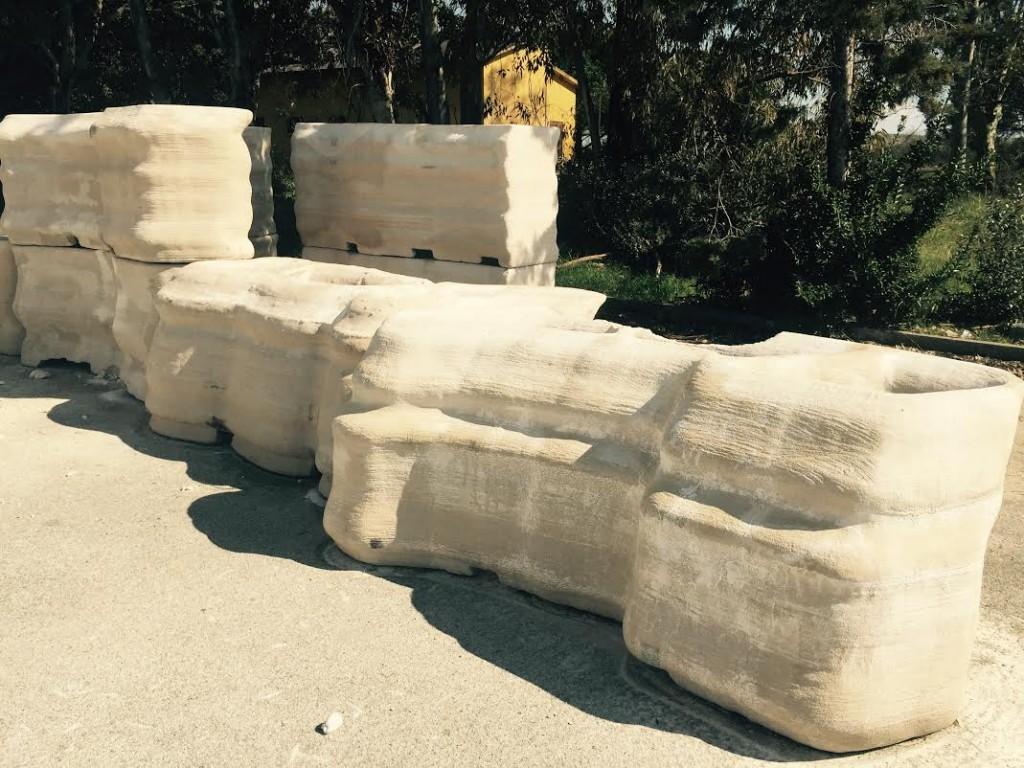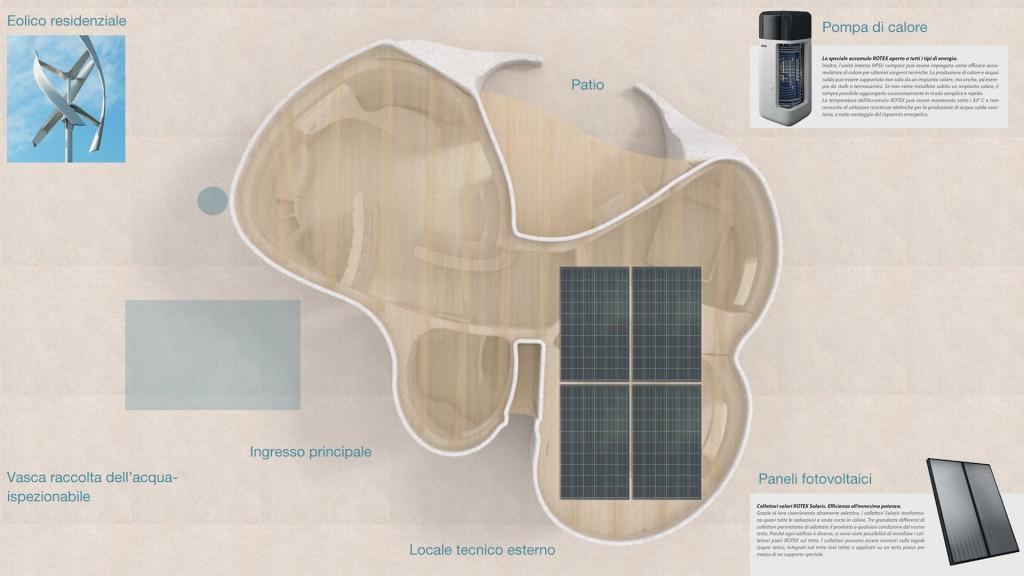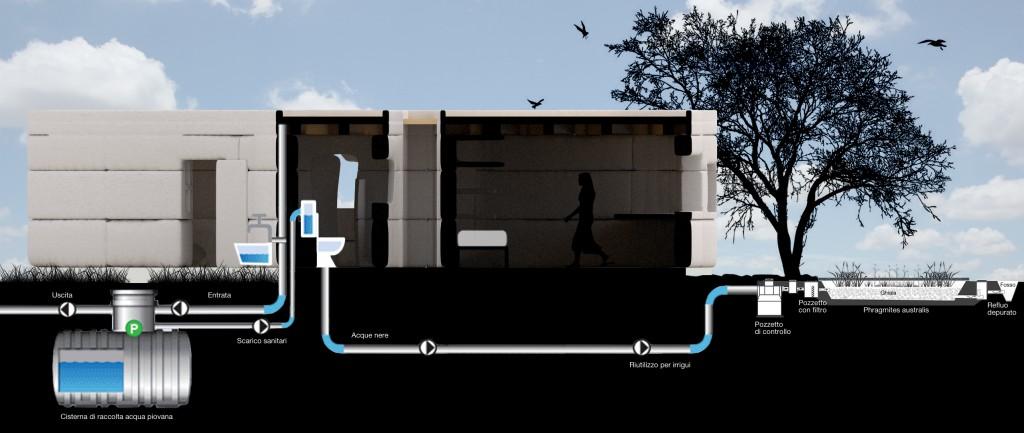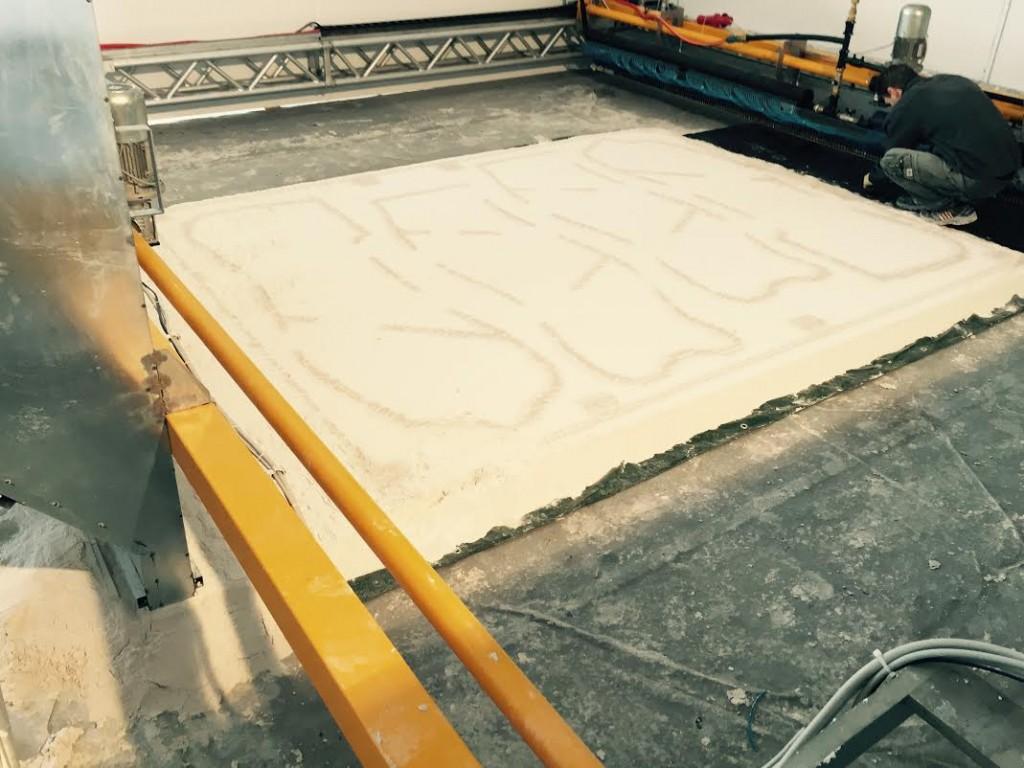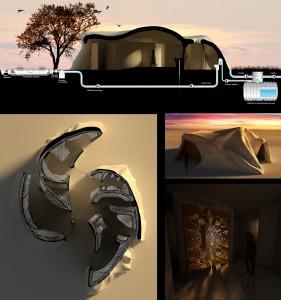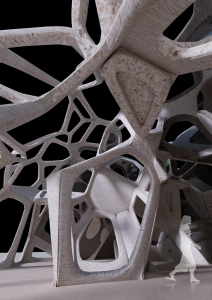D-Shape Intern Unveils Plans to 3D Print Unique Buildings in Australia & Beyond
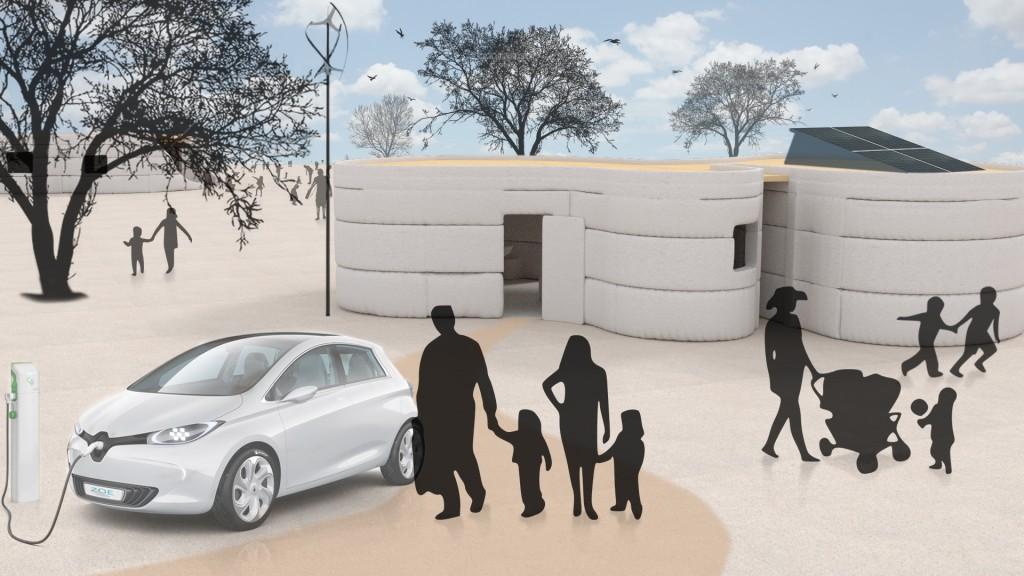 The 3D printing of homes and other large structures has gone from being something you’d expect to read in a science-fiction novel to a technology that has been proven, in just a few short years. One of the men leading the foray into such endeavors is an Italian man named Enrico Dini. As the founder of D-Shape, he has developed large-scale 3D printers that combine in-situ resources with binding agents to 3D print large structures such as coral reefs, buildings, and military bunkers in a similar fashion to how some of the industry’s ink jet-based 3D printers print product prototypes. Dini’s machines, however, are just much larger in size than these industrial rapid prototyping machines and use materials thatm when processed together, form a concrete material.
The 3D printing of homes and other large structures has gone from being something you’d expect to read in a science-fiction novel to a technology that has been proven, in just a few short years. One of the men leading the foray into such endeavors is an Italian man named Enrico Dini. As the founder of D-Shape, he has developed large-scale 3D printers that combine in-situ resources with binding agents to 3D print large structures such as coral reefs, buildings, and military bunkers in a similar fashion to how some of the industry’s ink jet-based 3D printers print product prototypes. Dini’s machines, however, are just much larger in size than these industrial rapid prototyping machines and use materials thatm when processed together, form a concrete material.
One young Italian woman, by the name of Luisa Vittadello, has recently had the awesome opportunity to intern for Dini, and she got a peek into what the future may just hold for this type of large-scale 3D printing technology. Vittadello, who graduated from the University IUAV in Venice, Italy, recently finished her Master’s thesis, entitled “Technology Foresight for the Architecture of the Future, 3D Printing,” where she outlined various insights into the future trends of technologies that will be used in architecture. One of those technologies happens to be 3D printing. However, it is the experience Vittadello gained by working with the brilliant mind of Dini that really shows us what the future of 3D printing will hold within the realm of architecture.
“This winter I worked for D-Shape as intern, and I designed several versions of 3D printed houses for Dini’s clients,” Vittadello tells 3DPrint.com.
One project, which Vittadello refers to as “Perth House: Some 3D projects, more feasible nowadays,” is one which is based on the 3D printing of many different structural blocks, using D-Shape’s 3D printers. These blocks, once printed, are then assembled by machines, creating a futuristic looking structure.
“This project was ordered by an Australian entrepreneur in order to realize several buildings in Perth, Australia,” Vittadello tells us. “Dini and I we are about to collaborate with a professor here in IUAV University of Venice, to improve the performance of the material [used for 3D printing]. The blocks will be made using the D-Shape technique. This printing technique uses sand mixed with salt and an environmentally friendly bicomponent inorganic binding agent that turns the sand, or alternative granular material, into rock.”
The project, which has not begun quite yet, promises to not only save a ton of time and money in the construction process, but also it is extremely environmentally friendly, using the “earth from the building site” to construct the actual building blocks. Using in-situ resources such as sands and gravel from the building site is virtually free. The liquid reagent used to harden the sands into rock costs €150/ton, while the reagent powder mixed with the sand costs €400/ton.
“Through the relationship between liquid reagent and the amount of sand, we will get that the price for 1 ton of D-Stone is 110€,” explains Vittadello. “To build a house of about 65sqm, including structural parts of the building and fixtures, a quantity of D-Stone amounting to 41 tons is needed for a total of 75€ per square meter, including energy to power the machine.”
Once transportation costs have been factored in, as well as the cost of labor and a lifting machine to lift and mount the individual 0.5-1 ton blocks into place, Vittadello estimates that it will cost about €25,000 in order to build a 65-square-meter (approximately 700-square-foot) building, from start to finish.
As you will notice in the renderings of these buildings, there are window openings throughout. These are designed to fit standard windows, although Vittadello notes that in her thesis project, she imagined that the windows could also be 3D printed using “transparent-ish plastic,” such as recycled PET. She believes there is still a ways to go in order for the windows to be 3D printed though, as she tells us that today’s technology of 3D printing recycled PET is not sufficient, as it remains extremely brittle.
The individual blocks that will be 3D printed are designed in such a way that they fit perfectly together. After being assembled they need to be finished to homogenize the exterior shape and provided a waterproof coating.
Suggestions for power and resoures include solar panels, wind power, heat pumps, rainwater cisterns to collect potable water, and a home automation center to allow for eletrochromic windows to be adjusted. The same energy storage system used for the house will also be able to recharge electric vehicles on the premises. The use of green plants and their associated microorganisms will be used in a phytoremediation process to reduce contamination in water, and allow for every day use.
This project is just the start for what Dini’s technology will be capable of providing within the near future when it comes to architecture. Vittadello has also taken a look into the future by envisioning what a 3D printed city may look like in 2030 and beyond. These futuristic structures will be 3D printed in one piece on-site, much in a matter similar to her concept of the “Dune” house (seen in the gallery below). It uses a similar water system but could make for the perfect 3D printed structure in locales such as Kenya, Africa.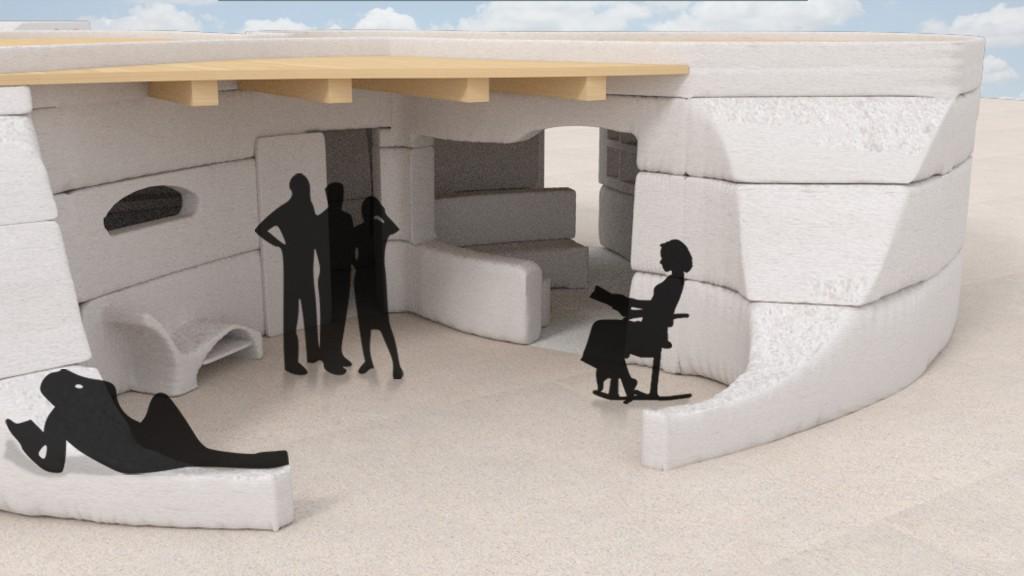
“There is not just one project I’d like to develop further, but at the moment I’m in a phase of research to allow 3D printing to develop massively in architecture, in order to hopefully go to Africa to build some first house prototypes,” says Vittadello.
Back in April, we covered a project being undertaken by James Wolff and Adam Kushner, in New York, where they will be using these very D-Shape machines to attempt to 3D print a full scaled house in one piece.
It should be interesting to keep an eye on this latest Australian project, as well as that of the project being undertaken in New York. Without a doubt, technology such as this will ultimately lead to more affordable and reliable building techniques in both the developed and developing worlds.
What do you think about this unique project? Is this the future of architecture? Discuss in the 3D Printing of Buildings in Australia forum thread on 3DPB.com. Check out the gallery of some of Vittadello’s concepts below and check out her website at arc-hi-tech.com.
- Vittadello’s Dune House
- Vittadello’s Cave House
- Vittadello’s Cave House in the Desert
- Sketches of the Australian project.
Subscribe to Our Email Newsletter
Stay up-to-date on all the latest news from the 3D printing industry and receive information and offers from third party vendors.
Print Services
You May Also Like
New Business: Temporary, Migratory, & Modular 3D Printed Architecture
If we look at potentially emerging 3D printing businesses, then architecture has not been fully explored. Yes, there is a lot of house 3D printing going on worldwide. From deployable...
3D Printing News Briefs, April 19, 2025: Material Extrusion Standard, Metal Powder, & More
In today’s 3D Printing News Briefs, we’re covering a proposed standard for material extrusion, before moving on to business and metal powder. We’ll end with a commercial store’s robotic 3D...
Japan Unveils World’s First 3D Printed Train Station
Japan is now home to what we believe is the world’s first train station built with 3D printing technology. Located in Arida City, just south of Osaka, the new Hatsushima...
restor3d Raises $38M to Expand 3D Printed Orthopedic Implants
Backed by $38 million in new funding, restor3d is pushing ahead with the launch of four personalized implant lines, set to roll out in 2025 and 2026. This latest venture...


